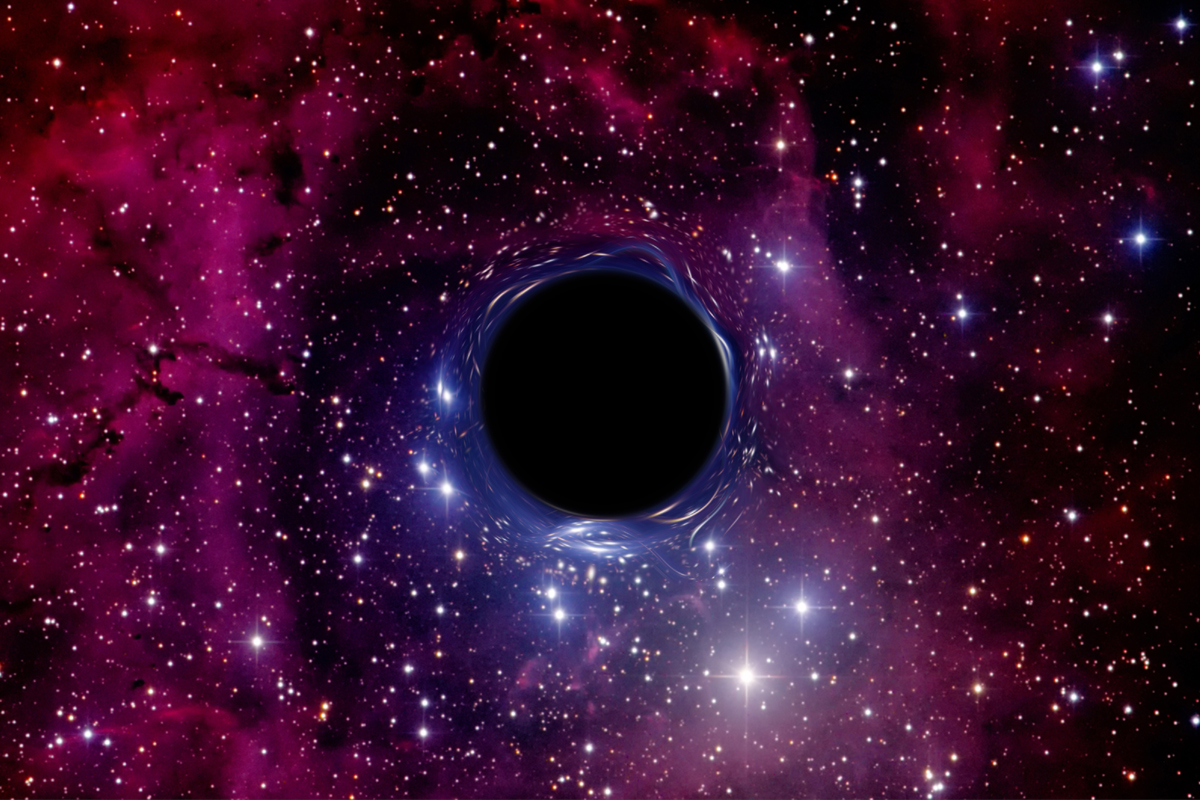Isaac Newton realised that gravity is an attractive force exerted by any two physical bodies having mass. This helped us to explain phenomena like the movement of moon around the Earth and the movement of the Earth around the sun. This enabled us to understand and answer some of our age-old questions. But the story of the Black Hole had barely begun in the year 1665.
There’s no doubt that Newton’s mind was able to delve way further than anyone else, into the deep mysteries of the universe at that time. His masterpiece, Philosophiæ Naturalis Principia Mathematica stands tall with pride and honour even to this day. While Leibnitz created calculus for the sake of mathematics; Newton did it because he realised he had done something which no one was thinking of before or questioned the world in the way he did. And therefore, out of sheer necessity to find a mathematical way to prove his theories he created a whole new kind of mathematics all together known to us as calculus.
Such was the might of Sir Isaac Newton. Newton’s findings were so great that people never dared to challenge him for the next couple of centuries. Well, not until a patent clerk came along.
The year was 1905; Herr Einstein’s golden year; when he published three major papers that changed our perception of the world. His ventures into the mystical realms of physics began with the phenomenon of the Photoelectric Effect.
However, the first two papers (second one being on Brownian Motion) didn’t exactly give him the appreciation and recognition he deserved. Therefore, he did as he had planned before. He wrote another paper. And this was when it happened. His third paper that year was special relativity, the theory that finally gave birth to general relativity. But developing general relativity was not an easy feat. And even after it was completed, it had to be proven.
The year was 1919, and for Sir Arthur Stanley Eddington, the 29 of May was one of the most nerve-racking days of his life. And for about six to seven minutes, no one in his team could relax a single muscle for even a fraction of a second. However, those intense moments of tension and the delicate and careful observations and recordings changed the very perception of our universe forever. And till this day, the equation to that perception holds true. The observations made by that man and his team on that day confirmed Einstein’s theory of General Relativity for the first time in history. So, the question that remains is, what is relativity?
When Newton learnt about gravity, he said that gravity is the force of attraction between two bodies having mass. However, one must understand that what Einstein did was not about proving Newton wrong. He simply gave us an accurate and fundamental theory to explain more fascinating and enchanting phenomena concerning gravity with better precision. Relativity says that space and time are not separate but rather weaved into a single fabric of reality called space-time. And gravity is the effect of the curvature, or the distortion of this fabric around an object with mass.
The more the mass of an object the greater is the warp in space-time. Before this theory was confirmed in 1919, the paper on it was published in 1916, but the progress was being made since 1906. During that time a scientist named Karl Schwarzschild provided with the first exact solution to Einstein’s field equations for a certain specific case. And that was when we were able to dare to think of something as ridiculous as a black hole for the first time with nothing but some chalks, some boards and some of the greatest brains on the planet.
When our technology advanced, we were introduced to arrays of radio telescopes, modern observatories and the Hubble-Space Telescope -we began to observe some weird things in space. We saw some stars revolving around a certain point in space. But there was nothing that we could see except darkness. So, we did the smart thing and found out precisely which point it was they were revolving around by mapping them over the days and months and years.
And after observing patterns, we could safely say it was indeed a black hole. But before we know how it looks like we must know what it actually is. A Black Hole is formed when a huge star of around eight solar masses or more collapses on its own gravity. Imagine a star with so much mass within such a confined space that the gravity is simply too great for even its surface to bear.
So, it shrinks under its own gravity and as it becomes smaller and smaller with such a great amount of mass, its gravitational force increases rapidly, and it keeps getting smaller and smaller till it reaches a singularity after which it can shrink no longer because there is no scope for shrinking any more. And when the star finally reaches that singularity with an immense gravity that warps the fabric of spacetime so much that it basically plucks a ‘hole’ in it, we are left with a black hole.
Black Hole’s singularity is where the laws governing the ‘large world’ (general relativity), and the ‘small world’ (quantum physics) meet. Because as you may know, there are four fundamental forces in the universe. Gravity is the weakest of them, so it doesn’t affect the forces in play in the sub-atomic world of particles. But the gravity of a Black Hole is so strong that it affects the other fundamental forces as well.
Basically, Black Hole’s gravity is so immense that even light cannot escape it since its gravity creates an unfathomable well of spacetime. So, the question is, if light cannot escape a black hole and every photon that gets near it just gets sucked into it, how on earth were we able to take its photograph? Well, first of all, we didn’t exactly take its photo. We can’t take the picture of that singularity around which the light swirls and then gets sucked into. But we can indeed take the picture of its shadow. Because you see, even though this phenomenon has an immense gravity, there’s a catch to it. You can always hope to escape its pull as long as you don’t cross the event horizon; the point of no return.
The event horizon is kind of like the ‘limit’ to the Black Hole’s gravitational pull. Once something crosses the event horizon, there is no going back. But if a ray of light coming from a star happens to simply be bent by the curvature in spacetime without falling into the deep well, it can survive the journey and come to us to tell us an unbelievable story. The image of the black hole that we took was actually the image of its shadow. The black hole lies right at the centre of that beautiful darkness. And the point at which the light stops shinning and the dark takes over is the event horizon.So, how did we manage to pull off this impossible feat?
First of all, we should be thankful to the scientists working at the EHT, the Event Horizon Telescope. And this feat was possible today because of a huge collaboration of scientists all around the world who worked tirelessly; gathering millions of terabytes of data and exchanging such vast amounts of information and piecing them together like a puzzle by developing some mind-blowing algorithms
Since the Black Hole spins on its axis rapidly, one may observe that the lower half of the black hole’s image is brighter than the upper half. It is because the lower half sling shots the light towards us, thus supplying us on Earth with more photons than the upper half which is spinning away from us. The black hole you see in the image sits in the lenticular galaxy of M 87 (87th celestial object in the Messier Catalogue).
To take its image scientists required a telescope as big as the size of the earth. Well of course we don’t have a telescope as big as that. But we have something bigger than that, our brains. So we settled for the next best thing. The scientists at the EHT linked themselves with research centres, radio telescopes and observatories all around the globe. The scientists used these telescopes, which are spread out across the face of the earth to capture the light coming from that black hole to combine the data they collect from various angles as the earth rotates and revolves.
This was one of the biggest collaborations in human history, and only after days of smart work with all that data, we were able to get our first look at the image of the Black Hole, which once again re-confirmed General Relativity. Seeing the image of a Black Hole is a feat which was next to impossible because one cannot see something which doesn’t emit light.
And even though we only have the picture of its shadow, we can now sleep peacefully while acknowledging the fact that now we know what this once-said-impossible celestial body really looks like.
(Tisyagupta Pyme is Ex-St Thomas Boys School, Kidderpore)












